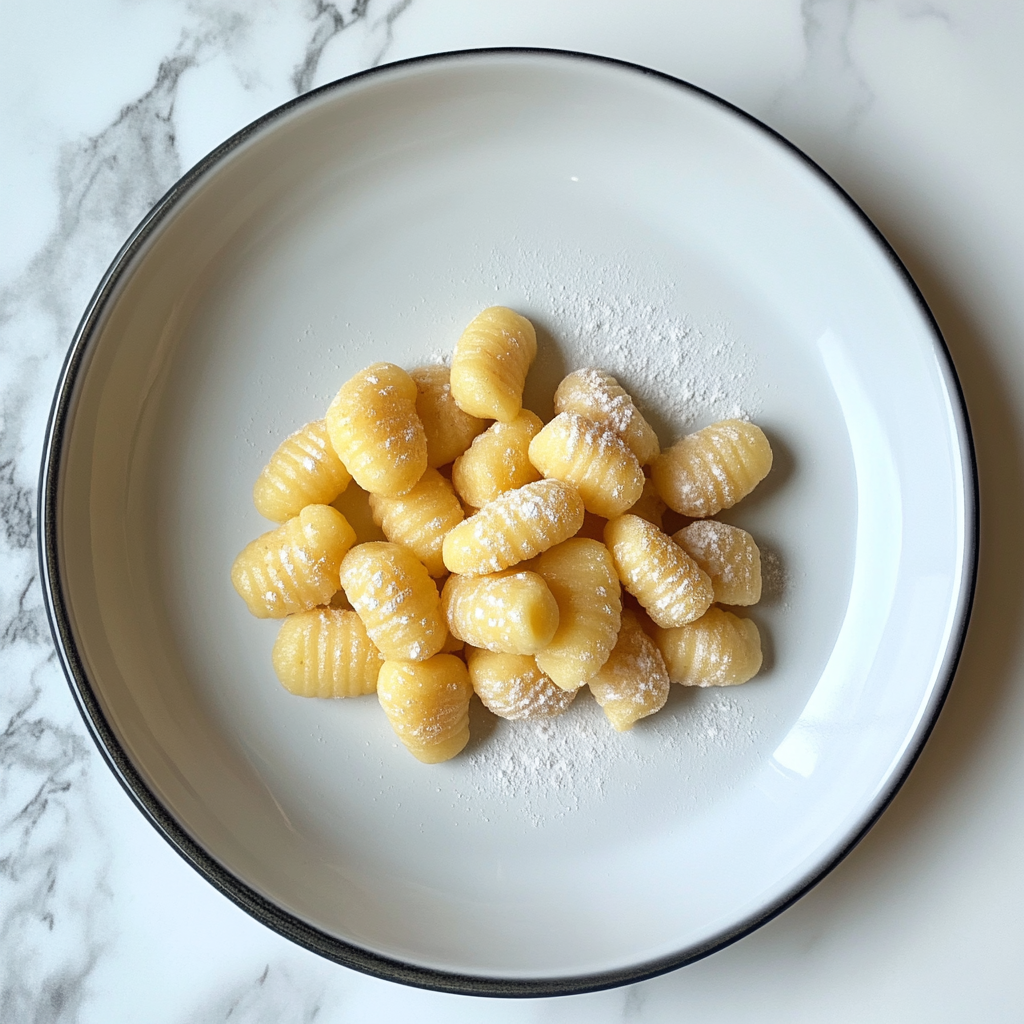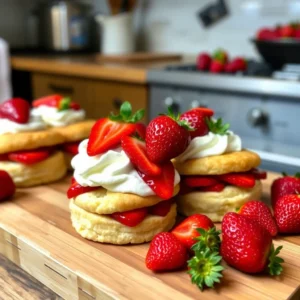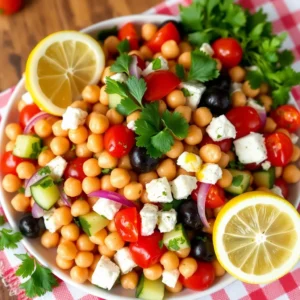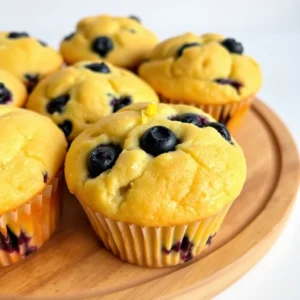Have you ever watched someone twirl a fork against a small pillow of dough, creating those signature ridges on gnocchi, and thought, “That looks way too complicated for my kitchen”? Friend, I’m here to tell you – homemade potato gnocchi is not only doable but downright therapeutic! As someone who once believed gnocchi was best left to restaurant chefs, I’ve discovered the simple joy of creating these pillowy potato dumplings at home. And trust me, once you try them, you’ll never go back to the store-bought version again!
Why You’ll Love Making Homemade Potato Gnocchi
There’s something magical about transforming humble potatoes into something extraordinary. These Italian dumplings have been gracing family tables for generations, and for good reason. They’re incredibly versatile, affordable to make, and offer that perfect blank canvas for whatever sauce inspiration strikes your fancy.
When you bite into homemade gnocchi, you experience a texture that’s simply impossible to find in those vacuum-sealed packages. Light, airy, and with just the right amount of chew – it’s comfort food that somehow manages to feel special enough for company too.
The best part? Making potato gnocchi requires just a handful of ingredients you probably already have in your pantry. It’s the perfect weekend project when you want to slow down, connect with your food, and create something truly memorable.
The Secret to Perfect Potato Gnocchi
Let’s address the elephant in the kitchen – yes, there are ways gnocchi can go wrong. They can turn out dense as rocks or dissolve into a pot of starchy water. But here’s the thing: with a few simple tricks, you’ll be making perfect gnocchi every single time.
The real secret? It all starts with the potatoes. Russets are your best friends here. Their high starch content and relatively low moisture make them perfect for creating that light, fluffy texture we’re after. And whatever you do, don’t overcook them! Waterlogged potatoes lead to sticky dough, which leads to gummy gnocchi. Nobody wants that.
Gathering Your Gnocchi Ingredients
Before we dive into the fun part, let’s make sure you have everything you need. The beauty of gnocchi is its simplicity – just a few quality ingredients come together to create something truly special.
For this recipe (which serves 4 hungry people), you’ll need:
- 2 pounds russet potatoes (about 4 large potatoes)
- 1½ cups all-purpose flour (plus extra for dusting)
- 1 large egg
- 1 teaspoon salt
- ¼ teaspoon freshly ground pepper
- ¼ teaspoon nutmeg (optional, but highly recommended!)
That’s it! No fancy ingredients, no special equipment (though a potato ricer is nice if you have one). Just simple, wholesome ingredients that transform into something magical.
Let’s Make Some Gnocchi Magic!
Now that we’ve got our ingredients ready, let’s walk through the process step by step. Don’t worry – I’ll be right here with you through every fork indent!
Step 1: Cook Those Potatoes Just Right
First things first – let’s get those potatoes cooked properly. Leave the skins on (yes, really!) and place them in a large pot of salted water. The skins actually help prevent the potatoes from absorbing too much water.
Bring the water to a boil and cook the potatoes for about 20-30 minutes, until they’re fork-tender but not falling apart. You should be able to easily pierce them with a fork, but they shouldn’t be so soft that they’re disintegrating.
Once they’re done, drain the potatoes and let them cool just enough that you can handle them without burning your fingers. Then, peel the skins off while they’re still warm – it’s much easier this way! The skins should slip right off.
Step 2: The Perfect Potato Mash
Here’s where texture really matters. Ideally, you want to use a potato ricer for the fluffiest gnocchi. Don’t have one? No problem! A regular potato masher works too, just be extra diligent about getting out all the lumps.
The key is to mash your potatoes while they’re still warm – this ensures the starch molecules are at their most cooperative. But then (and this is important), let the mashed potatoes cool completely before adding the other ingredients. Warm potatoes + flour = gluey dough, and we definitely don’t want that!
A pro tip from my kitchen to yours: spread your mashed potatoes out on a baking sheet and pop them in the refrigerator for about 15 minutes. This helps any excess moisture evaporate and gives you that perfect starting point for your dough.
Step 3: Creating Your Gnocchi Dough
Now comes the fun part! On a clean, lightly floured surface, create a mound with your cooled mashed potatoes. Form a well in the center, like you’re making pasta dough, and add your egg, salt, pepper, and nutmeg (if using).
Sprinkle about half of your flour over the potato mixture, and begin to gently incorporate everything together. Gradually add more flour as needed, using a light touch – we’re not kneading bread here! Work just until the ingredients come together in a soft, slightly sticky dough.
The golden rule of gnocchi: less is more when it comes to handling the dough. Overworking leads to tough, chewy gnocchi, which is definitely not what we’re after. Your dough should feel soft and pillow-like, not tight and springy.
Step 4: Shaping Your Gnocchi
This is where the magic really happens – turning your dough into those adorable little dumplings we all know and love.
Divide your dough into 4 equal portions. Working with one portion at a time (keep the rest covered with a clean kitchen towel to prevent drying), roll it into a rope about ½-inch thick. Think of it as making a play-dough snake – it’s that simple!
Using a knife or bench scraper, cut the rope into 1-inch pieces. Voilà – you’ve got gnocchi! But wait, we’re not done yet.
For that classic ridged texture that helps gnocchi hold onto sauce, you have options. The traditional method is to roll each piece down the tines of a fork, creating ridges on one side and a slight indentation on the other. Another approach is to use a gnocchi board if you happen to have one. Or honestly? You can leave them as simple pillows – they’ll still taste amazing!
Step 5: The Cooking Process
Here’s where gnocchi shows its true colors as a busy cook’s best friend – they take literally minutes to cook. Bring a large pot of generously salted water to a rolling boil. Remember: your cooking water should taste like the sea!
Working in batches (don’t overcrowd the pot), gently drop your gnocchi into the boiling water. Now, watch for the magic moment – when they float to the surface, they’re almost done! Let them cook for another minute or so after they float, then scoop them out with a slotted spoon.
If you’re planning to sauce them right away, transfer the gnocchi directly to your sauce. If you’re prepping ahead, toss them with a little olive oil to prevent sticking.
A little chef’s secret: for an extra special touch, try pan-frying your boiled gnocchi in a little butter until they develop a golden crust. The contrast between the crispy exterior and pillowy interior is absolutely divine!
Serving Suggestions: Taking Your Gnocchi to the Next Level
Now that you’ve mastered making these pillowy potato dumplings, let’s talk about how to serve them. One of the most beautiful things about gnocchi is its versatility – it’s like a blank canvas waiting for your creative touch!
Classic Gnocchi Pairings
For a simple yet elegant preparation, try the traditional brown butter and sage sauce. Just melt some butter in a pan until it starts to brown and develop a nutty aroma, toss in some fresh sage leaves until they crisp up, and finish with a generous sprinkle of Parmesan cheese. It’s simple food at its absolute finest.
Craving something more substantial? A hearty tomato sauce with a touch of cream makes gnocchi feel like the ultimate comfort food. Or go fully seasonal – toss your gnocchi with roasted butternut squash and crispy pancetta in the fall, or with fresh peas and mint in the spring.
For summer dinners on the patio, nothing beats gnocchi tossed with fresh pesto, cherry tomatoes, and torn burrata. Add a glass of crisp white wine, and you’ve got dinner party material that took minimal effort but delivers maximum flavor.
Troubleshooting Tips: When Gnocchi Goes Sideways
Even the most experienced cooks sometimes end up with less-than-perfect gnocchi. Here’s how to solve common gnocchi dilemmas:
Help! My Dough Is Too Sticky!
This is probably the most common gnocchi problem. If your dough sticks to everything – your hands, the counter, possibly your cat – don’t panic! Just add a little more flour, a tablespoon at a time, until it reaches a workable consistency. But remember, we’re aiming for “slightly sticky” here – not dry and tough.
And next time, make sure your potatoes are completely cooled before adding flour, and consider spreading them out to let excess moisture evaporate.
My Gnocchi Fell Apart in the Water!
Oh no! This heartbreaker usually happens when there’s not enough binding (flour or egg) in your dough. For your current batch, try lowering the heat so the water is at a gentle simmer rather than a rolling boil. This gentler cooking environment might help save some of your dumplings.
In the future, make sure you’re using starchy potatoes and that they’re not waterlogged from boiling. Adding a bit more flour to your dough can also help, but remember – it’s a balancing act between enough structure to hold together and staying light and tender.
These Turned Out Like Little Bricks!
If your gnocchi could be used as paperweights, you likely used too much flour or overworked the dough. The fix for next time? Use a lighter touch when mixing, and add flour gradually. Remember that different potatoes have different moisture levels, so you might need less flour than the recipe calls for.
Make-Ahead Tips for Busy Cooks
Let’s be real – as much as we all love fresh gnocchi, sometimes you need to work ahead. The good news? Gnocchi freezes beautifully!
After you’ve shaped your gnocchi (but before cooking), arrange them in a single layer on a flour-dusted baking sheet and pop them in the freezer. Once they’re completely frozen (about 2-3 hours), transfer them to a freezer bag. They’ll keep for up to 3 months.
When you’re ready to enjoy them, there’s no need to thaw! Just drop the frozen gnocchi directly into boiling water and cook as usual. They’ll take a minute or two longer than fresh, but will taste just as amazing.
A Personal Note: Why I Love Making Gnocchi
I remember the first time my grandmother showed me how to make gnocchi in her tiny kitchen. The afternoon sun streamed through the windows as she demonstrated how to roll each piece against the tines of a fork, creating those perfect ridges. “Patience,” she said, “is the secret ingredient.”
Years later, making gnocchi has become my own form of kitchen therapy. There’s something meditative about the process – the rhythmic rolling, cutting, shaping. It forces me to slow down in a world that moves too fast. And when my own children gather around to help, pressing their tiny fingers into the dough to create dimples that will hold the sauce, I’m reminded that we’re not just making dinner – we’re making memories.
Even on days when my gnocchi aren’t picture-perfect, they’re still delicious. And isn’t that a beautiful life lesson? Perfection is overrated – it’s heart and soul that matter most in the kitchen.
Frequently Asked Questions About Homemade Potato Gnocchi
Can I use different types of potatoes to make gnocchi?
While russet potatoes are traditional and give the best texture due to their high starch content, you can experiment with other varieties. Yukon Golds will give you a slightly more buttery flavor, though your gnocchi might be a bit denser. Avoid waxy potatoes like red potatoes – they contain too much moisture and not enough starch, resulting in gummy gnocchi.
Is there a way to make gluten-free gnocchi?
Absolutely! You can substitute the all-purpose flour with a good quality gluten-free flour blend. Look for one that contains xanthan gum to help bind the dough. You might need to adjust the amount slightly, as gluten-free flours absorb moisture differently. Start with about 1 cup and add more as needed to achieve that soft, slightly sticky consistency.
How do I know when I’ve added enough flour to my gnocchi dough?
This is where cooking becomes more art than science. The perfect gnocchi dough should feel soft and slightly sticky, but manageable. If it sticks to your hands like crazy, you need more flour. If it feels stiff or bounces back too much when pressed, you’ve gone too far with the flour. When in doubt, err on the side of less flour – you can always dust with more as you roll and shape.
Elevating Your Homemade Potato Gnocchi: Variations to Try
Once you’ve mastered basic potato gnocchi, the culinary world is your oyster! Here are some exciting variations to try:
Sweet Potato Gnocchi
Swap regular potatoes for sweet potatoes for a gorgeous orange hue and subtle sweetness. These pair beautifully with brown butter and sage, or try them with a maple cream sauce for something truly special.
Herb-Infused Gnocchi
Add finely chopped fresh herbs like rosemary, thyme, or basil directly to your dough for an aromatic twist. Just make sure the herbs are very finely chopped so they distribute evenly.
Spinach Gnocchi
Cook some spinach, squeeze out all excess moisture, and finely chop it before adding to your dough. Not only will you get beautiful green gnocchi, but you’ll also sneak in some extra nutrients!
From Kitchen to Table: Serving Your Homemade Gnocchi
Whether you’re hosting a dinner party or enjoying a cozy family meal, presentation matters. Serve your gnocchi in warm bowls, garnished with fresh herbs and a generous grating of good Parmesan cheese. A drizzle of your best olive oil adds a beautiful finishing touch.
For a complete meal, pair your gnocchi with a simple green salad dressed with lemon and olive oil. The brightness cuts through the richness and creates balance. And don’t forget a basket of crusty bread to soak up every last bit of sauce!
The Joy of Homemade Potato Gnocchi
Making potato gnocchi from scratch connects us to centuries of culinary tradition. It reminds us that the most satisfying dishes often come from the simplest ingredients, transformed by human hands and a little bit of love.
When you make homemade potato gnocchi, you’re not just preparing a meal – you’re creating an experience. The process itself becomes part of the pleasure, from the first potato you boil to the last dumpling you shape. And when you finally sit down to enjoy the fruits of your labor, that first pillowy bite tastes all the sweeter because you made it yourself.
So the next time you find yourself with a few potatoes and a free afternoon, I hope you’ll give homemade gnocchi a try. It might just become your new kitchen tradition, one that brings comfort, joy, and deliciousness to your table for years to come.
Looking for More Homemade Pasta Recipes?
If you’ve enjoyed making homemade potato gnocchi, you might also love trying your hand at homemade pasta from scratch. The process is equally rewarding and opens up even more culinary possibilities!
For another Italian classic that’s simpler than you might think, check out my authentic risotto recipe that takes the mystery out of this creamy, comforting dish.
And if you’re looking for the perfect sauce to pair with your gnocchi, don’t miss my classic marinara sauce that can be prepared while your potatoes are boiling!
For more information about the history and cultural significance of gnocchi in Italian cuisine, the Italian Food Forever website offers fascinating insights and regional variations.
The Serious Eats Food Lab also has an excellent scientific breakdown of what makes perfect gnocchi, for those who want to understand the chemistry behind this beloved dish.



